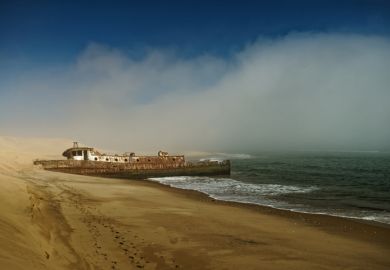Most people I have met have a vague understanding that a place called Fiji exists. However, they know little about it. If I ask them about the associations they attach to the word, they invariably conjure up visions worthy of a Bacardi ad: palm trees and beaches. A few have an alternative vision. They recall distant memories of television pictures of coups in paradise; of Colonel Sitiveni Rabuka's balaclava-clad soldiers overthrowing the government of Dr Timoci Bavadra; and of Bavadra wandering the streets of London in search of political support. While accurate, the two visions emphasise difference, what separates the inhabitants of Fiji from ourselves. Of course there must be more to Fiji. In addition to difference there must be shared common experiences. These common experiences form another, "hidden" history, one from which we can learn.
In focusing on the development of an extractive primary industry, 'Atu Emberson-Bain's Labour and Gold in Fiji explores one facet of this hidden history. Since 1934 four million ounces of gold have been produced in the area around the town of Vatukoula. As recently as 1988 gold mining was responsible for 15 per cent of Fiji's export earnings. The Australian-based Emperor Gold Mining Company currently provides a livelihood for around 7,000 people in and around Vatukoula. Yet the benefits of gold mining do not appear to be evenly shared. In 1989 wages represented only 12 per cent of gold earnings. Further, under an agreement with the government the company has not paid any tax since 1983. At the same time there is some evidence that the company uses transfer pricing. Finally, a high proportion of earnings are repatriated to Australia. To Emberson-Bain, this is inequitable. She notes a comment made by a former company manager: "whoever has the gold makes the rules".
Emberson-Bain's book is both meticulous in its scholarship and accessible in its writing. It will undoubtedly become the definitive account on the development of gold mining in Fiji. At the same time however the book raises a number of wider issues which will be of interest to those engaged in comparative geography, development studies, international business studies and labour history. Thus, the book throws light upon the management and operations of transnational corporations working in extractive industries. Similarly, the book offers a detailed examination of the relationship between the state and transnational corporations, as intervention by successive Fiji governments shaped the monopolistic structure of the Fiji gold mining industry. Above all else however the book explores the making of a working class. Emberson-Bain documents how over the space of 30 years the activities of the state, transnational corporations, and indigenous tribal hierarchies fostered the transformation of subsistence farmers into low-paid migrant mine labour and thence into a stable, settled waged labour force. Emberson-Bain further documents how labour attempts to resist comparatively low pay were weakened by the deployment of racial hierarchies. These were given material expression; different ethnic groups had alternative job definitions for similar tasks and the social wage received varied considerably by ethnic group.
Labour and Gold in Fiji opens with a metaphorical legend which originated around Vatukoula. It says that "the soil . . . was to have provided for our people". 'Atu Emberson-Bain's fine book judiciously demonstrates the difficulties inherent in obtaining such an outcome when dealing with powerful transnational corporations, compliant states and comprador elites. It is an all too common lesson.
A. Haroon Akram-Lodhi is a senior lecturer in economics, South Bank University, London.
Labour and Gold in Fiji
Author - 'Atu Emberson-Bain
ISBN - 0 521 363721
Publisher - Cambridge University Press
Price - £40.00
Pages - 0



